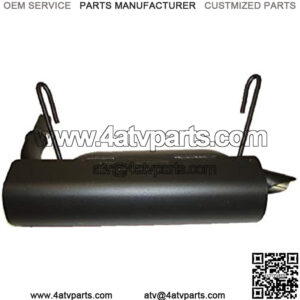For a long time, many enthusiasts have subscribed to the philosophy that “bigger is always better” when it comes to the diameter of your exhaust system. While there is some truth to this, that’s not always the case – you can go too big. I know, it’s a tough thought to get your head around, but stay with me here.
So let’s talk about why this is. Your exhaust is designed with a three main factors in mind: Direct hot, toxic exhaust gases out of the engine to somewhere outside the vehicle; reduce the noise output of your car; and lastly, reducing emissions.
For the sake of today’s discussion, we’re going to stick to the “Cat-Back” section of the exhaust system, as that’s where most folks go wrong – as not everyone can just fab up their own header or downpipe like they can a catback exhaust pipe. Replacing your restrictive OEM exhaust manifolds with a performance header, like the aFe Power Twisted Steel Headers for 997 991 Carreras shown above, will give you an increase in horsepower- but if your exhaust is too large, you could be losing the gain your headers are trying to provide.
Keeping these functions in mind, now we can look at the exhaust system itself. The exhaust gas is hot, and we actually want it to stay hot as it exits the exhaust system. “But wait,” you may be saying to yourself, “don’t we want to avoid heat?”. Yes, but here’s something to keep in mind. Remember how with your intake, you want colder, denser air going into the engine? Well, that dense air is heavy – and a mass of cold air is harder to move than a mass of hot air. Since there’s more volume for the exhaust gas to travel through, the gas has plenty of time to cool off. And that cooler air is heavier and so your engine has to work harder to push it through the system. Imagine how your stomach would feel after eating a 3lb burrito. It sure would be hard to get things out of your system with a brick like that in your gut, wouldn’t it? Yes, it’s kind of a gross analogy, but that’s exactly what an overly large exhaust pipe is doing to your motor.
This means that an extremely large exhaust pipe will actually cause SLOWER exhaust flow, and decreased performance. That overly large size that contributes to slower flow also creates more chaotic flow inside the exhaust system and so the exhaust “pulses” don’t sync up and harmonize like they’re supposed to, and this means that if you have headers you’re undoing the benefit your headers are supposed to provide.
So, how big should my exhaust be? This is a real hot button topic, especially amongst guys with smaller displacement turbo motors. So for the sake of discussion, let’s use a specific, real world example. In the case of your author, my 2014 Ford Fiesta ST has a turbo 1.6L engine, good for about 170hp at the wheels stock, and with a little tuning, the Fiesta ST can get up into the 250whp range at “full bolt on” status, before you need to upgrade to a larger turbo. The turbo on the EcoBoost 1.6L is about the size of a hotel hair dryer, which translates to a low lag, high boost turbo sized appropriately for the 1600cc mill. The car has a rather small 2.25″ diameter exhaust system, but considering the displacement – and horsepower output – it doesn’t have to be much larger than it is already. The generally accepted rule of thumb for cars making 250-350whp is 3 inch to 3.5 inch diameter, and even at FBO status the car is barely breaching the 250hp level, so a 3in exhaust may actually be too large of Exhaust for the Ford Fiesta ST and so a 2.5in or 2.75in system like the MillTek Catback and MillTek 2.75in Downpipe may actually make more power than a 3in, in the case of my particular application.
The general rule of thumb for exhaust systems is, as we said 3-3.5in for 250-350whp, above that 4″ exhaust is the right size, but that’s about as big as you want to go, even at the 400whp-500whp level.
With today’s vehicles, tuning for your upgrades is more important than ever, so if you run a tune, be sure and update it for your next exhaust system. While some may say “oh, the exhaust of a turbo car is hotter than an NA car” – this simply isn’t true – the temperature of the exhaust gas is a function of the air fuel mix, ignition and cam timing, and not the turbocharger.
So as cool as it might be to have someone custom-fabricate a 5″ mandrel bent exhaust under the car, all that work would be for naught if you puncture it on the first speedbump you come across. That’s why it’s important you research your exhaust options and opt for a system engineered for your application and sized with real performance gains in mind rather than blanketing everything with the biggest system possible.
About atv exhaust
“atv exhaust silencer”
“atv exhaust clamp”
“atv loud exhaust”

